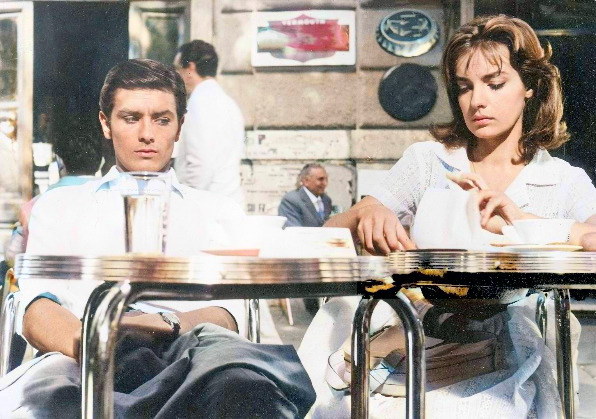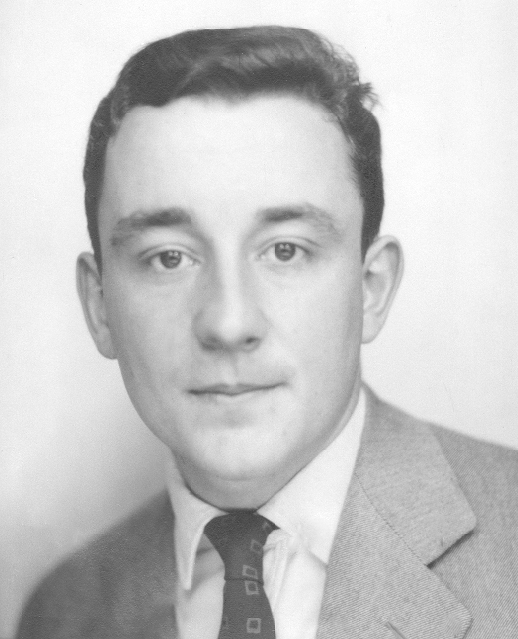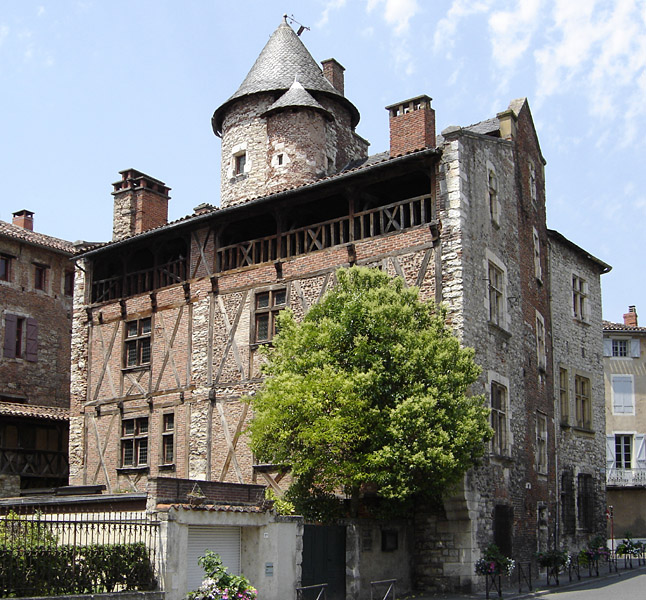|
Marie Laforêt
Marie Laforêt (born Maïtena Marie Brigitte Douménach; 5 October 1939 – 2 November 2019) was a French singer and actress, particularly well known for her work during the 1960s and 1970s. In 1978, she moved to Geneva, and acquired Swiss citizenship. Birth name Her first name Maïtena, which is of Basque people, Basque origin, means "beloved" and is sometimes used by the inhabitants of Languedoc, especially in the Pyrénées. Douménach, her last name, is Catalan language, Catalan in origin – Domènec in Catalan. Her birth name and her repertoire, which included pieces inspired from world folklore, have led to speculation of an Armenians, Armenian origin of her parents. The singer herself used to define herself sometimes as "ariégeoise", i.e. from the region of Ariège (department), Ariège in the south of France. Early life and education Marie Laforêt was born on 5 October 1939 at Soulac-sur-Mer, in the Médoc region of France, to Jean Doumenach and Marie-Louise (n� ... [...More Info...] [...Related Items...] OR: [Wikipedia] [Google] [Baidu] [Amazon] |
Soulac-sur-Mer
Soulac-sur-Mer (; , , ), commonly known as Soulac (''Solac''), is a commune in the department of Gironde, administrative region of Nouvelle-Aquitaine (formerly Aquitaine), France. It is a seaside resort on the Côte d'Argent, on the peninsula of Médoc, 12 km from Royan and 86 km from Bordeaux. History The history of the town remains relatively unknown before the medieval period. The town was for a time known as ''Noviomagus'', mentioned by Ptolemy in his work ''Geography'' as being one of the two parts of a city held by the Bituriges Vivisques tribe, but this theory remains controversial in modern times. The territory of the town has been inhabited since the Neolithic period and through the Bronze Age, as shown by several archaeological discoveries. At the time, the configuration of the coasts differed. Soulac, today by the sea, was then located on the banks of the river. The town was at the end of an ancient route known as the Levade (or Lébade). Population Twin ... [...More Info...] [...Related Items...] OR: [Wikipedia] [Google] [Baidu] [Amazon] |
Lavelanet
Lavelanet (; ''L'Avelhanet'' in the Languedocian dialect of Occitan language, Occitan) is a Communes of France, commune in the Ariège (department), Ariège Departments of France, department in the Occitania (administrative region), Occitanie Regions of France, region in southwestern France. History Prehistory and Antiquity The Roman character of the subsurface constructions of the two towers of the ancient feudal castle of Lavelanet give Lavelanet a very ancient origin. A town must have existed before the Roman conquest because the Romans considered it appropriate to build fortifications in the gorge of the river Touyre. The name of the fortified castle "''Castelsarrasin''" also recalls the stay of the Moors in this area (this information being based on hypotheses). The appearance of the first “drapery fullers” follows the arrival of the Phoenicians in the region; in fact for commercial purposes they teach the "natives" the art of textiles and the use of fuller's ear ... [...More Info...] [...Related Items...] OR: [Wikipedia] [Google] [Baidu] [Amazon] |
René Clément
René Clément (; 18 March 1913 – 17 March 1996) was a French film director and screenwriter. He is known for directing the films ''The Battle of the Rails'' (1946), ''Forbidden Games'' (1952), ''Gervaise (film), Gervaise'' (1956), ''Purple Noon'' (1960), and ''Is Paris Burning? (film), Is Paris Burning'' (1966). He received numerous accolades including five prizes at the Cannes Film Festival and the Honorary César in 1984. Early life Clément studied architecture at the École des Beaux-Arts where he developed an interest in filmmaking. In 1936, he directed his first film, a 20-minute short written by and featuring Jacques Tati. Clément spent the latter part of the 1930s making documentaries in parts of the Middle East and Africa. In 1937, he and archaeologist Jules Barthou were in Yemen making preparations to film a documentary film, documentary, the first ever of that country and one that includes the only known film image of Imam Yahya. Career Almost ten years passed b ... [...More Info...] [...Related Items...] OR: [Wikipedia] [Google] [Baidu] [Amazon] |
Alain Delon
Alain Fabien Maurice Marcel Delon (; 8 November 1935 – 18 August 2024) was a French actor, film producer, screenwriter, singer, and businessman. Acknowledged as a cultural and cinematic leading man of the 20th century, Delon emerged as one of the foremost European actors of the late 1950s to the 1980s, and became an international sex symbol. He is regarded as one of the most well-known figures of the Cinema of France, French cultural landscape. His style, looks, and List of Alain Delon performances, roles, which made him an international icon, earned him enduring popularity. Delon achieved critical acclaim for his roles in films such as ''Women Are Weak'' (1959), ''Purple Noon'' (1960), ''Rocco and His Brothers'' (1960), ''L'Eclisse'' (1962), ''The Leopard (1963 film), The Leopard'' (1963), ''Any Number Can Win (film), Any Number Can Win'' (1963), ''The Black Tulip (1964 film), The Black Tulip'' (1964), ''The Last Adventure (1967 film), The Last Adventure'' (1967), ''Le Samour ... [...More Info...] [...Related Items...] OR: [Wikipedia] [Google] [Baidu] [Amazon] |
Louis Malle
Louis Marie Malle (; 30 October 1932 – 23 November 1995) was a French film director, screenwriter, and producer who worked in both French cinema and Hollywood. Described as "eclectic" and "a filmmaker difficult to pin down", Malle made documentaries, romances, period dramas, and thrillers. He often depicted provocative or controversial subject matter. Malle's most famous works include the crime thriller '' Elevator to the Gallows'' (1958), the romantic drama '' The Lovers'' (1958), the World War II drama '' Lacombe, Lucien'' (1974), the period drama '' Pretty Baby'' (1978), the romantic crime film '' Atlantic City'' (1980), the dramedy '' My Dinner with Andre'' (1981), and the autobiographical '' Au revoir les enfants'' (1987). He also co-directed the landmark underwater documentary '' The Silent World'' with Jacques Cousteau, which won the 1956 and the 1957 Academy Award for Best Documentary. Malle is one of only four directors to have won the Golden Lion twice. His other a ... [...More Info...] [...Related Items...] OR: [Wikipedia] [Google] [Baidu] [Amazon] |
Raymond Rouleau
Raymond Rouleau (; 4 June 1904 – 11 December 1981) was a Belgian actor and film director. He appeared in more than 40 films between 1928 and 1979. He also directed 22 films between 1932 and 1981. Rouleau studied at the Royal Conservatory of Brussels, where he met Tania Balachova. They immigrated to Paris together and collaborated with a variety of directors at the cutting edge of French theatre, including Charles Dullin and Gaston Baty. They married in France and separated in 1940. He subsequently married the actress Françoise Lugagne. Partial filmography * '' L'Argent'' (1928) - Jantrou * '' The Nude Woman'' (1932) - Pierre Bernier * '' Suzanne'' (1932) * ''Le jugement de minuit'' (1933) - L'inspecteur Berry * ''Une vie perdue'' (1933) * '' Volga in Flames'' (1934) - Schalin * ''Vers l'abîme'' (1934) - Rist * '' Beautiful Days'' (1935) - Boris - le deuxième amoureux de Sylvie * '' Donogoo'' (1936) - Pierre * ''Rose'' (1936) * '' The Heart Disposes'' (1936) - Robert ... [...More Info...] [...Related Items...] OR: [Wikipedia] [Google] [Baidu] [Amazon] |
Catharsis
Catharsis is from the Ancient Greek word , , meaning "purification" or "cleansing", commonly used to refer to the purification and purgation of thoughts and emotions by way of expressing them. The desired result is an emotional state of renewal and restoration. In dramaturgy, the term usually refers to arousing negative emotion in an audience, who subsequently expels it, making them feel happier. In Greek the term originally had only a physical meaning, describing purification practices. In medicine, it can still refer to the evacuation of the '' catamenia'' ("monthlies", menstrual fluid). Similarly, a cathartic is a substance that accelerates the defecation of faeces. The first recorded uses of the term in a mental sense were by Aristotle in the ''Politics'' and '' Poetics'', comparing the effects of music and tragedy on the mind of a spectator to the effect of catharsis on the body.Aristotle, ''Poetics''1449b/ref> The term is also used in Greek to refer to the spiritual p ... [...More Info...] [...Related Items...] OR: [Wikipedia] [Google] [Baidu] [Amazon] |
Lycée La Fontaine (Paris)
Lycée Jean-de-La-Fontaine is a lycée in the 16th arrondissement of Paris, France. The school building, in the shape of an "open rectangle", was constructed on top of ancient fortifications. Construction began in 1935 and finished in 1938. Towards the end of World War II World War II or the Second World War (1 September 1939 – 2 September 1945) was a World war, global conflict between two coalitions: the Allies of World War II, Allies and the Axis powers. World War II by country, Nearly all of the wo ... it was used as an American hospital. External links Lycée La Fontaine Educational institutions established in 1938 La Fontaine 1938 establishments in France {{France-school-stub ... [...More Info...] [...Related Items...] OR: [Wikipedia] [Google] [Baidu] [Amazon] |
Paris
Paris () is the Capital city, capital and List of communes in France with over 20,000 inhabitants, largest city of France. With an estimated population of 2,048,472 residents in January 2025 in an area of more than , Paris is the List of cities in the European Union by population within city limits, fourth-most populous city in the European Union and the List of cities proper by population density, 30th most densely populated city in the world in 2022. Since the 17th century, Paris has been one of the world's major centres of finance, diplomacy, commerce, culture, Fashion capital, fashion, and gastronomy. Because of its leading role in the French art, arts and Science and technology in France, sciences and its early adoption of extensive street lighting, Paris became known as the City of Light in the 19th century. The City of Paris is the centre of the Île-de-France region, or Paris Region, with an official estimated population of 12,271,794 inhabitants in January 2023, or ... [...More Info...] [...Related Items...] OR: [Wikipedia] [Google] [Baidu] [Amazon] |
Valenciennes
Valenciennes (, also , , ; ; or ; ) is a communes of France, commune in the Nord (French department), Nord Departments of France, department, Hauts-de-France, France. It lies on the Scheldt () river. Although the city and region experienced a steady population decline between 1975 and 1990, it has since rebounded. History Early history In 923, it passed to the Duchy of Lower Lotharingia dependent on the Holy Roman Empire. Once the Empire of the Franks was established, the city began to develop, though the archaeological record has still not revealed all it has to reveal about this period. In 1259, Valenciennes was the site of a General Chapter of the Dominican Order at which Thomas Aquinas together with masters Bonushomo Britto, Florentius, Albert the Great, Albert, and Pope Innocent V, Peter took part in establishing a ''ratio studiorum'' or program of studies for the Dominican Order that featured the study of philosophy as an innovation for those not sufficiently trained ... [...More Info...] [...Related Items...] OR: [Wikipedia] [Google] [Baidu] [Amazon] |
Cahors
Cahors (; ) is a Communes of France, commune in the western part of Southern France. It is the smallest prefecture among the 13 departments that constitute the Occitania (administrative region), Occitanie Region. The capital and main city of the Lot (department), Lot department and the historical center of the Quercy, Cahors is home to 20,141 ''cadurciennes'' and ''cadurciens'' (2021). Nestled in a Meander cutoff, meander of the Lot (river), Lot and surrounded by steep arid limestone hills, this historic city is home to a great monumental diversity, mainly inherited from Ancient Rome, Roman times and the Middle Ages; the city's monuments include a historic city centre, Cahors Cathedral, Saint-Étienne cathedral, Roman walls and the famous Pont Valentré, Valentré bridge (a UNESCO World Heritage Site as part of the pilgrimage path to Santiago de Compostela). Famed for its Cahors wine, wine and gastronomy (truffles and foie gras), this southern French city holds the label of the ... [...More Info...] [...Related Items...] OR: [Wikipedia] [Google] [Baidu] [Amazon] |






